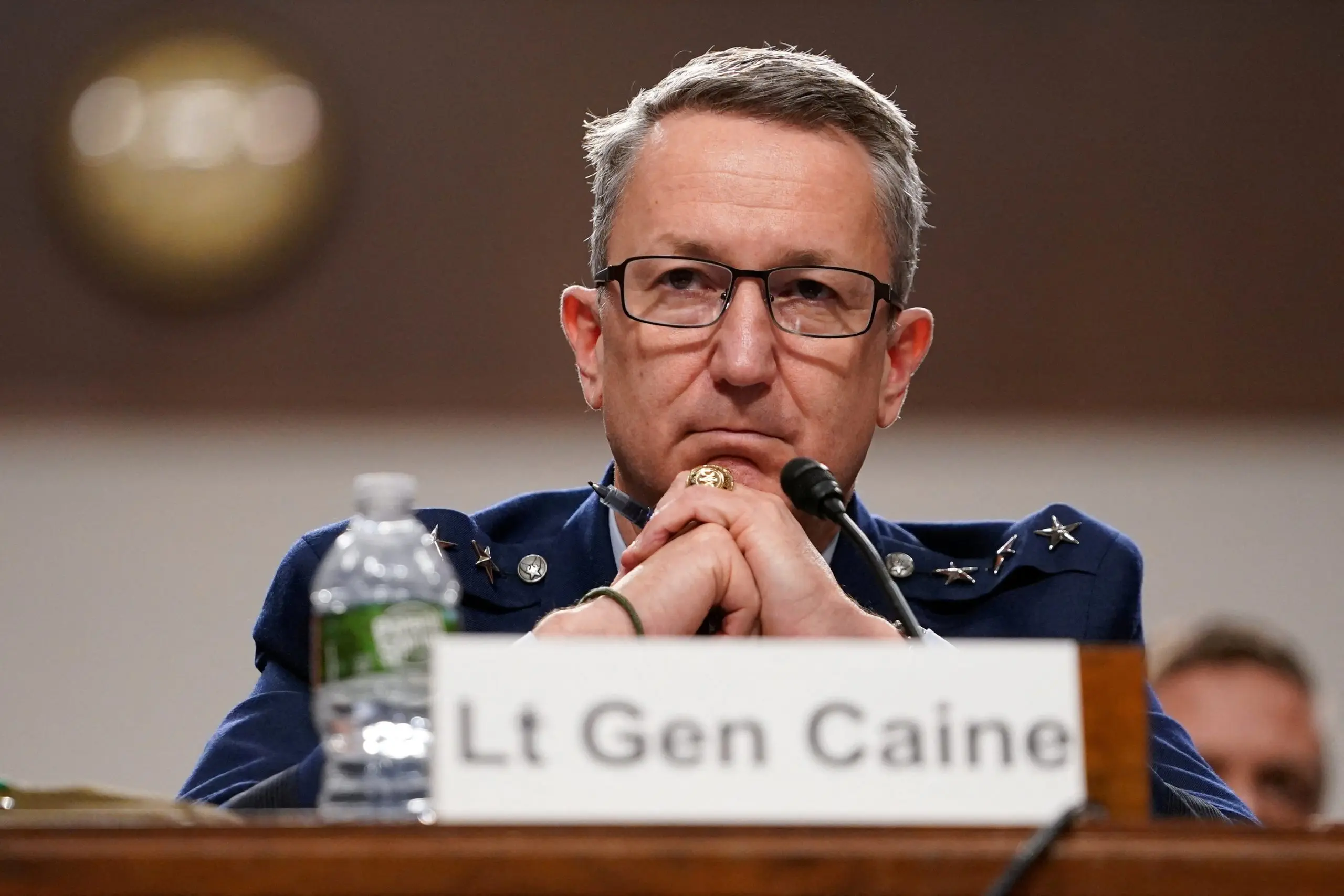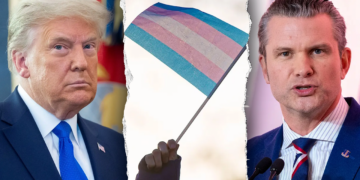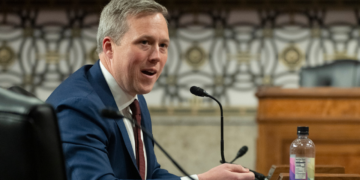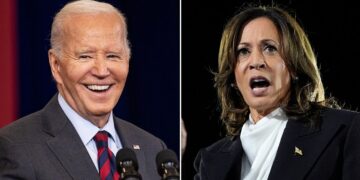Virginia, as his mother, Lucy Grymes was once courted by George Washington, while his father, Henry Lee II, bred horses. When Henry III turned fourteen, he attended Princeton with other founding fathers like Aaron Burr and James Madison, standing out amongst his peers.
It was during this time, that Henry Lee became wrapped up in revolutionary sentiment and joined the continental army. He climbed through the ranks and earned the nickname “Light Horse Harry” following the cavalry charge he led at the battle of Paulus Hook, New Jersey,
Which drew the attention of George Washington. Following the war, he served as the Governor of Virginia. Robert E Lee’s mother was Anne Hill Carter, who was born into a prestigious and wealthy plantation family. Anne’s father, Charles Carter, was a fifth-generation plantation
Owner of the Shirley Plantation. Anne Carter married Henry Lee III during his governorship on the 18th of June 1793 in the Governor’s mansion’s parlor room. Following his retirement from the governorship, Anne moved in with Henry Lee at the family’s holdings. Together
The couple had a total of six children, but only five survived into adulthood, with Robert E Lee being the fifth child born. When Robert E Lee was only one, the family fell on hard times, as the main source of income, the Stratford Plantation, was taken via entail and given
To Henry’s son from his first marriage, Henry Lee IV. The lost revenue was just one financial disaster that fell upon the family, as Henry Lee had terrible luck in land speculation and ended up in debtor’s jail twice.
While protecting one of his friends who opposed the War of 1812, Henry Lee was injured severely and left the family to recover. Robert E Lee would not see his father again, as he died on the 25th of March 1818, on Cumberland Island, Georgia, whilst trying to reunite with his
Family. Ultimately, Robert’s father became known simply as the man who “wrote Washington a bad check”. Lee spent his time with his widowed mother in a modest home, though this was only possible, due to the Carter’s leaving a small legacy to sustain her. The family
Lived at the Ravensworth Plantation, which was owned by one of Anne’s relatives, William Henry Fitzhugh. Ravensworth Plantation would serve as the backdrop for Lee’s depressing childhood, as the house was on the outskirts of Alexandria in the “swampy, mosquito infested and unhealthy” part of town. The house’s interior was never painted while the Lee’s
Resided there, and they did not live alone, as they frequently shared with boarders. Lee did not live a privileged childhood, but he had fond memories of his pet lobster and hummingbird, which began his love of animals, yet they sadly both passed on the same day.
Lee spent his summers swimming in the Potomac and playing in the local springs. He attended a plantation school in Fauquier county before attending the Alexandria Academy at the age of fourteen. He received an excellent education whilst attending the Alexandria Academy, learning
Literature, algebra as well as the classics. Lee’s family was well connected to the Virginia aristocracy, this led to Fitzhugh penning a letter to United States Secretary of War, John C. Calhoun, imploring that he allow Lee a spot at the United States Military Academy,
West Point. Fitzhugh had Lee deliver the letter personally to Calhoun, which resulted in Lee being enrolled at West Point in 1825. For all of Lee’s life, he had lived in the world of slavery, and now that he would be attending West Point, he would be entering a world where
Slavery was all but extinct. But despite the Lee’s financial situation, they maintained four slaves left to Anne by her father. Lee was accustomed to being surrounded by slaves, but as he went further north, the number of enslaved blacks lessened and whilst
They were still not equal, many held freedoms Lee was not accustomed to. West Point at the time focused heavily on engineering, thanks to its superintendent Brevet Major Sylvanus Thayer. Before Thayer had arrived at West Point, it was marred with drunkenness, disorder, and riots but he transformed the academy into a prestigious institution.
He introduced the famed cadet uniform, with gray coats, starched white trousers, and plumed black leather hats with polished brass scales for the chinstraps. When Lee arrived in June of 1825, there were roughly 200 cadets who would be given an exam intended to weed out
Those who were “idiots and misfits”. Following that, the cadets who made it through the examination, were paired with three other cadets who shared a tent. Together, the tent mates had to purchase a “joint toilet, a looking glass, a washstand and basin, pitcher, tin pail, broom, and a
Scrubbing brush”. The quality of the food was often described as poor, yet Lee never complained about it. Wealthier cadets who snuck out of West Point, would visit Gridley’s Tavern to eat, drink, and smoke. Most who went out would be given
A demerit, but Lee never received any demerits, accomplishing a feat, few others achieved. The curriculum consisted heavily of mathematics and French, as mathematics was crucial for military officers of the era, whilst France was the only ally to the United States and
Most military textbooks were in French. The Marquis de Lafayette often visited West Point, to inspect the cadets and these visits inspired Lee, as Lafayette and his father Henry, had fought together in the American Revolution, bringing 18th century heroes into evolving
19th century military tactics. Lee’s daily regime at West Point started at 5:30 am with the reveille. Following a full day of mathematics and French classes, along with hours of independent studies, the cadets finished their day with full dress drills, parade, and inspections.
The cadets’ day would officially end at 10 pm, and whilst all cadets maintained a busy schedule, Lee made many friends during his time at West Point. One such friend was troublemaking third-year cadet, Jefferson Davis, who was caught going off grounds to
The local tavern to get drunk, he was only allowed to remain due to his previous good standing. Lee became close to fellow West Point Cadets Joseph E. Johnston, Albert Sidney Johnston and Leonidas Polk. When Lee’s first year at West Point finished, he was third in his class, and achieved a
Rating of 285 and ¼ out of 300 total points available. He was placed on a list with the other “distinguished cadets”, and Lee’s status among ‘the good and the great’ was odd for a man new to the academy. His reputation would earn him the nickname “Marble
Man” for his emotionless expressions whether he won or lost. During Lee’s second year, drawing was included in the curriculum, as officers were expected to be able to draw a usable map. Lee was made a senior cadet and tutored many of his fellow cadets in mathematics.
He was enamored by the campaigns of Napoleon Bonaparte and read multiple books about his campaigns. Many of these books were new to the United States, showing the impressive collection West Point had, also Lee’s ability to read French with relative ease, allowed
Him access to these texts, as they would not have been translated into English. Many of Napoleon’s tactics would be used by Lee on the battlefield, as like Napoleon, he refused to fight on the defensive, and preferred to use rapid attacks and bold flanking maneuvers.
Following Lee’s second year, he maintained second place standing in his class and applied for leave to visit his mother, who now lived with Lee’s oldest brother Charles Carter Lee in Georgetown. His mother’s health had greatly deteriorated since Lee went away to
West Point, and when he came home, he took control of her care. Lee returned in 1827 for his third year at West Point and added physics and chemistry to his course list. Lee was introduced to battalion tactics and artillery use on the battlefield. He enhanced
His knowledge by reading Machiavelli, Hamilton, Rousseau, and John Paul Jones. His wide command of different subjects outside of the military or engineering made him a special officer, though he remained in second place in his class. When Lee started his final year, he
Was given the position of adjutant of the corps, which is the highest position a cadet can hold. He would take his final exam on the1st of June 1828, finishing second once again, only to Charles Mason. Upon graduating, Lee was given his choice of commission as a Lieutenant in the Engineer
Corps, a prize worthy of a top student at West Point. Though his achievements while at West Point would bring joy to Lee for a time, another family hardship would hit him hard. Lee had just arrived home, when it became clear his mother would not recover, and in
A couple of weeks of his return home, Ann passed away. Following his mother’s death, Lee spent much of his time in Arlington, Virginia, especially with Mary Anna Randolph Curtis. The two met during Lee’s first furlough and he made a good first impression whilst
Attending house parties in his grey cadet attire. Ironically, they were seen as a mismatched pairing, as Lee was never late and was overly organized while Mary was almost always late and “scatter brained”. Despite this, the two took their time with supervised visits
And hoped eventually for a future together with the blessing of Mary’s parents. On the 11th of August 1829, Lee received orders from Washington to report to Major Samuel Babcock of the Corps of Engineers in Cockspur Island, Georgia. Unfortunately for Lee, Cockspur Island was a depressing, hostile location with “heat, humidity, fever and mosquitoes”
Which made summer work unbearable, but it was also near where his father was buried. The Corps of Engineers had been attempting to build a fort to protect the mouth of the Savannah River but was struggling to succeed. Lee immediately got to work, even getting
Involved in the labor himself, although most of his hard work would be destroyed by a storm after the labor season ended. Major Babcock would not return to Cockspur, as he was replaced with Lieutenant J.K.F. Mansfield. Mansfield lacked confidence to complete the project,
And in turn would be replaced with Captain Delafield. Lee and Delafield immediately began outlining new plans for the fort with Lee acting as the draftsman. Savannah would teach Lee a valuable lesson with regards to the sedated decision making of the Corps of Engineers,
And how projects lacked sufficient funds and were located in the worst places possible, he felt that if a situation was hopeless to change, you should remove yourself from the situation, and so Lee used his connections in Washington to get him reassigned to Old Point, Virginia at Fort Monroe.
Transferring to Fort Monroe would bring him closer to Mary and his smart decision making would set him apart from others. On his way to Fort Monroe, Lee stopped in Arlington to see Mary, and whilst there, he finally convinced her father to let them marry. Mary took Lee
To the dining room to eat, and Lee asked Mary if she would marry him. The couple would marry on the 30th of June 1831 and Mary decided to share Lee’s quarters at Fort Monroe, she did so, and they lived there completely on their own, without any support from her
Father. The two were quite unique, as Mary had a tendency to “boss” Lee around the house, something unusual in the era. Nonetheless, the two maintained a strong bond and it was during this time, that the Lee’s acquired a place in Arlington, a location which enabled
Him to put down roots, something he never had during his childhood. The Arlington House as it would be later called, was heavily inspired by Lee’s relatives’ house, Mount Vernon, or George Washington’s plantation. The couple moved into Lee’s quarters at Fort Monroe
In August of 1831, but his ability to work would be affected by problems with the authority of the garrison between the fort and school leader Brevet Colonel Eustis and the engineer leader Captain Andrew Talcott. Disputes rose frequently between the two men, mainly because
The laborers for the engineering corps were disruptive to military procedures which vexed Brevet Colonel Eustis. Despite the conflict between the army and the engineers, Lee excelled and took on vast amounts of responsibility despite his inferior rank to many other officers.
Lee worked hard to complete Fort Monroe, which would become known as the “Gibraltar of Chesapeake Bay” and it was during this time at Fort Monroe, that America’s only effective slave revolt occurred in Southampton County, Virginia, which became known as the Nat Turner
Rebellion. Nat Turner was an educated slave who preached to other slaves about the evils of slavery and how one day, God would release them from their chains, allowing them to enact their revenge against their owners. An eclipse gave Turner the sign he was looking for and
He started his rebellion on the 21st of August 1831. As a result of the rebellion, Fort Monroe received 3 companies of artillery to deter any further rebellions. This event would shock the South, as the myth of happy slaves was ultimately laid to rest, it also resulted
In stricter laws regarding the freedom of slaves. Robert E. Lee was always consistent regarding his view on slavery and its effects on society. He was never an enthusiastic supporter and in a letter to Mary he stated that quote:
“slavery as an institution, is a moral and political evil in any Country. It is useless to expatiate on its disadvantages. I think it however a greater evil to the white man than to the black race, and while my feelings are strongly enlisted on behalf of the latter,
My sympathies are more strong for the former”. Although Lee expressed disapproval of the institution of slavery, he still held the common view in the latter half of his letter, that quote: “The blacks are immeasurably better off here than in Africa, morally, socially,
And physically. The painful discipline they are undergoing, is necessary for their instruction as a race, and I hope will prepare and lead them to better things. How long their subjugation may be necessary is known and ordered by a wise and Merciful Providence”. Lee held
A young moderate Southern gentleman’s view on slavery. While he agreed that slavery was immoral, he believed that the problem of slavery would be handled by God in his time, and it was not the responsibility of politicians or slave owners to answer the question. While
Lee’s approach was more of inaction towards the institution, despite his objection to it, others would take a different approach. Henry Clay, John Randolph, and Richard Bland founded the American Colonization Society to sponsor the creation of Liberia, to send
Free blacks back to Africa. In order to satisfy slave owners, they were to be compensated for the loss of their slaves. Ultimately, the Liberia Plan failed in its initial goal and as tensions rose, it was written off as a slave holders’ scheme.
The politics at Fort Monroe continued and despite Lee’s low rank, he always seemed to have more influence than senior officers such as Colonel Eustis. This is believed to be because General Gratiot, the chief of the Corps of Engineers had more political sway
In Washington DC over the Chief of artillery. Lee would lead the project to extend and reinforce a fifteen acre artificial island which would eventually become Fort Wool. This new fort would be used to support and defend Fort Monroe with crossfire at enemy vessels. Though the
Work was steady, he gained no joy from it and began to doubt his choice to join the military. The new soldiers who arrived at Fort Monroe brought new social life, primarily in the form of drinking, although Lee would abstain for the most part and never understood
The obsession with getting drunk. Unlike many of his fellow young officers, he was never seen as being stuffy and was considered to be great company to be around. He kept his distance from his peers and was a reserved man. Mary would visit Lee at Fort Monroe in
June of 1832 and it would be during this time that the couple would announce the impending arrival of their first child. The Lee’s first child would be George Washington Custis Lee, who was named after his grandfather, George Washington’s adopted son. Mary would spend much of her time raising him at Arlington.
Between 1832 and 1834, Lee would essentially take charge of the engineers at Fort Monroe from his friend and superior Captain Talcott, who was frequently absent. Yet his time would be short at Fort Monroe, as in 1834, Lee would be transferred to Washington DC to the War
Department. Lee found the office work at the War Department to be monotonous with the chances of being promoted relatively slim, while the pay was even worse, but he would enjoy the birth of his first daughter Mary Custis Lee in 1835. During this time, General Gratiot
Hardly visited the project sites leaving Lee in charge of overseeing their progress. He was bound by endless red tape and would only be saved from the paperwork when he was dispatched to assist his old friend Captain Talcott in the Midwest territories in 1835.
In the state of Ohio and the territory of Michigan, fighting broke out over a small section of land known as the Toledo Strip. The Toledo Strip spanned 500 square miles and included the important port of Toledo. This conflict would eventually result in the
Toledo War, which was little more than a brief skirmish, as the only injury was a Michigan deputy who was stabbed by a boy with a pen knife. During the dispute, Captain Talcott and Lieutenant Lee surveyed the area to better determine the boundaries of Ohio and Michigan
And ultimately, Michigan lost the Toledo Strip to Ohio but in return it received the upper peninsula which would be the cause of the rivalry between Ohio and Michigan. Following his surveying of the Ohio and Michigan border, Lee was dispatched in 1837 to St. Louis to
Solve a major problem. The Mississippi River was cutting a new channel that threatened the port that brought trade to St. Louis and Lee was the only suitable candidate to tackle the assignment. The port of St. Louis was an important transportation site, as many
Americans who travelled west to California and Oregon would meet there, and should Lee fail, westward expansion might come to a complete halt. Lee had two objectives: Save the port and waterfront and remove as many trees as possible from a 200 mile stretch of the Mississippi River along the Missouri-Iowa border.
The technology of Navigational Engineering was still in its infancy during Lee’s time in St. Louis, and Lee needed to find a way to curb the rivers natural will to change direction. The Corps of Engineers had dumped tons of boxed sand around Bloody Island in
Order to push the current towards St. Louis and away from the new channel, but the boxes were smashed which only worsened the situation by increasing the bar. After the wooden boxes failed, they tried using teams of oxen to dredge up the sand, yet that attempt too would
Ultimately fail. The river was not impossible to tame, as Lee had learned many lessons, and knew he must create barriers that were strong enough to channel the current but would also create resistance to destroy the dykes. Lee reflected back to his days at West Point,
Specifically a French textbook on hydrodynamics, and used that as his inspiration for the project. The original idea was to use the undergrowth to snag debris that floated down the Mississippi River. The Lee’s had their third child on the 31st of May 1837, this time a boy, William Fitzhugh
Lee. Despite being overjoyed at the newest addition to the family, the pay Lee was receiving in the army was slowly lessening his ability to take care of his family properly. But Lee’s work in St. Louis did not go unnoticed, and in July of 1838, he was promoted to the rank
Of Captain. In the summer of 1839, on the 18th of June, the Lee’s welcomed their fourth child, Anne Carter Lee to the family. However, his work in St. Louis would be stopped by angry Illinois citizens who opened fire on his workers with cannons, out of fear that
The progress Lee was making would cut them out of the increasingly lucrative trading along the Mississippi River. The Illinois citizens had hoped to prevent the growth of St. Louis in order to force trade through their city, and an injunction was issued by
The Second Illinois Circuit halting all work on Bloody Island. Lee had worked hard to improve the conditions along the Mississippi, but by the summer of 1840, he returned to St. Louis to finalise the affairs of the army by selling the equipment it had purchased for the work.
Lee was then reassigned to New York City to oversee the reconstruction of fort’s Hamilton and Lafayette along with the battery positions on Staten Island. The restoration of these fortifications was vitally important as the only major threat to American authority was
Great Britain, as they were the only nation who had the means to bring the fight to American shores. Yet before his arrival in New York, the Lee’s had their fifth child, Eleanor Agnes Lee on the 27th of February 1841. His duties in New York were deemed significant
Enough to encourage his family to move with him, yet Mary and his children would not join him right away. Mary’s unwillingness to move to New York at first was criticized by many, as she would have been expected to go wherever Lee went, yet in her defense, she
Had five children between 1832 and 1841 and suffered from arthritis and general poor health. Mary would join Lee in New York in the spring of 1843 but would leave shortly after when she found out she was pregnant. Mary would give birth to their sixth child, Robert E
Lee Jr. on the 27th of October 1843, but Lee was still in New York focusing on the forts. Although Lee was a skilled Engineer, he had very few other accomplishments which would bring him the attention he deserved, however he did have one highlight on his resume. Lee
Was named as a member of the board of examiners at West Point in 1844, he would spend two weeks at West Point overseeing and judging the final exams of the Cadets along with Major General Winfield Scott, the commanding officer of the U.S. Army who formed a positive opinion
Of Lee during the time they spent together. Scott was a large, towering figure of the day, also a hero from the War of 1812 with the nickname “Old Fuss and Feathers”. Lee was never the type of person to use flattery to advance himself like many other officers,
Although this would never have worked on General Winfield Scott as he was known to “soak flattery up like a sponge” so Lee used his intelligence instead to impress him. The impression Lee made on General Winfield Scott gave him some advantages, as from 1844 to 1846 he acted
As a congressional liaison for the chief of engineering while simultaneously working in New York. He was also appointed to be a member of the board of engineers for the Atlantic Coast Defense and during this time, in early 1846, Mary gave birth to the Lee’s final
Child, Mildred Childe, who was affectionately called Milly by Lee. The action which Lee was seeking would eventually happen when events out west began to heat up. Mexico and the United States were trying to establish hegemony over the west as the
Territory was increasing in population density. The origin of the disputes go back to 1810, when Moses Austin was granted land in Texas by the Mexican government. The Mexican government hoped the American settlers would provide a buffer between the raids of the Comanche
Tribe and Mexican citizens. Instead, the Americans overwhelmed the Mexican government who did not have the administrative or military ability to keep them in line. The ineffectiveness of the Mexican government to corral the American citizens would result in the overthrow of
The government by General Antonio López de Santa Ana who was nicknamed “The Napoleon of the West”. He would both threaten to take military action on the American settlers and offer to sell them more land. General Santa Anna made good on his threats, and attacked
The Texan held mission called the Alamo. From the 23rd of February to the 5th of March in 1836, the 100 men garrison held off the 1,500 strong Mexican army, but the Alamo fell on the 6th of March. The women and children of the mission were allowed to leave, but the
Men were slaughtered at the site, leading to the famous battle cry “Remember the Alamo”, which stirred the American public into a frenzy. Following the massacre at the Alamo, the Texans routed the Mexicans at the Battle of San Jacinto which forced Mexico to recognize Texan independence. Ten years later, Texas would be annexed by
The United States in 1845. Mexico was outraged at the annexation of Texas while the northern states were irate at the addition of another slave state into the Union. Mexico broke off its diplomatic relations, yet President James Polk wished to maintain diplomatic relations
In order to purchase California and New Mexico. Mexico continued to experience political instability, as the Mexican Presidency changed four times, the ministry of war six times, and the finance ministry sixteen times. Despite this instability, if there was anything that could unite the
Mexican people, it was their hatred for losing Texas to the Americans. The border between the United States and Mexico was disputed as Mexico believed the border was along the Nueces River while the United States believed the border lay along the Rio
Grande. As a result, President Polk sent Brigadier General Zachary Taylor to occupy the land, but they were attacked by a Mexican cavalry unit, killing sixteen Americans. The Thornton Affair, as it became known, gave the American government the cause to attack Mexico, as
Polk argued to Congress that “American blood has been shed upon American soil.” In response, General Tylor moved swiftly against the Mexican army, defeating them twice at Palo Alto and then at Resaca de la Palma. The Americans outclassed the Mexican army with its advanced
Weapons which included the speedily deployed horse artillery and the Colt Revolver. The outbreak of the Mexican War gave Lee the opportunity he was looking for to better his rank in the military, and on the 19th of August 1846, he would be dispatched to San Antonia
De Bexar, Texas, to report to Brigadier General John E. Wool. General Wool and Captain Lee were stopped along the Rio Grande when a Mexican officer appeared with a flag of truce reporting that General Taylor had defeated a Mexican army at the Battle of Monterey. Apparently,
General Taylor had accepted “an eight-week armistice in return for its surrender”. This armistice, as Lee and others speculated, only served as a barrier to allow Santa Anna to recruit and train new soldiers to fight again against the Americans and on the night
Of the 18th of November, news reached camp that the armistice had been cancelled by President Polk, to the relief of Lee and the other soldiers. Lee and the army advanced deep into enemy territory towards Parras to support General Worth in Saltillo and arrived two days before Christmas.
Lee led a scouting mission to determine the position of the Mexican army and was quite determined in his pursuit. His tenacity impressed General Wool who made Lee his acting inspector general. Lee would learn that being persistent whilst carrying out reconnaissance paid off
And also to not take exaggerated reports seriously. General Wool was ordered to join up with General Taylor in Bueno Vista to support him against Santa Anna, where Santa Anna was routed by a force of 5,000 Americans against his 14,000 Mexican force. Lee left to join General Scott
On the 17th of January 1847 and upon his arrival, was accepted into Scott’s general staff and inner circle. Lee was quartered on the flagship U.S.S. Massachusetts, sharing his room with former West Point classmate Joseph E. Johnston. In total, 12,000 men would be under General Scott’s command for the invasion of Vera Cruz.
On the 19th of February 1848, the fleet sailed to the Lobos Islands to rendezvous with the rest of their forces but were delayed due to smallpox outbreaks and a vicious storm. The fleet left on the 3rd of March and arrived in Vera Cruz on the 5th of March, where Lee
First saw the imposing island fortress of San Juan de Ulúa which guarded the city. Lee boarded the Petrita along with General Scott to survey the beaches, but the ship strayed too close to the fort leading to an opening salvo from the fortress. This was
The first time, in Lee’s 22 year long military career, that he had been under fire. On the 9th of March 2,595 soldiers went ashore with no resistance from the Mexican army and during the night of the 22nd of March, the American mortars opened fire. By the 27th of March,
Vera Cruz had fallen to the Americans. Lee’s first taste of battle would leave him disheartened, as he would write to Mary that “It was awful! My heart bled for the inhabitants. The soldiers I did not care so much for, but it was terrible to think of the women and children”. Lee
Never had a love for glory for his own sake, and his first battle left him melancholy. General Scott then looked to Mexico City, which was 280 miles away, but his supply lines would be stretched thin. The United States army had no intelligence concerning where
Santa Anna’s army was located, let alone their size. Santa Anna had returned to Mexico City following his defeat at Bueno Vista and raised a new force of 12,000. General Scott left Vera Cruz with 6,000 troops and found Santa Anna at Cerro Gordo where he held an
Imposing defensive position. Following a reconnaissance mission, Lee informed General Scott there was a potential pathway they could cut to the extreme left flank of Santa Anna’s line without them knowing. Scott agreed and gave Lee the opportunity to guide a division to
The Mexican Army and commence the battle on the 18th of April. In preparation for the assault, the soldiers started scaling the hill on the 17th of April , but they made too much noise and alerted the Mexican army who started advancing down the hill. They
Countercharged up the hill pushing the Mexican army back before finally establishing a hold on the summit of La Atalaya. Ultimately, the Mexicans were defeated at the battle of Cerro Gordo and the Americans only suffered minor casualties in comparison to the Mexican army.
Lee’s actions at the Battle of Cerro Gordo earned him a promotion to brevet major and praise from all of his superiors. Lee would leave with Scott along with lieutenants P.G.T. Beauregard and George B McClellan towards Mexico City. Following a small engagement
At Molina del Rey, the army was now in position to assault Chapultepec. Chapultepec was an important fortress, as it overlooked Mexico City which would allow for continuous assaults. As the senior engineer, Lee argued against a direct assault on the fortress but Lee was
Overruled and led Pillow’s division to the west flank of Chapultepec. The first assault was pushed back, but the second assault was successful with Lee climbing the slope accompanied by Lieutenants James Longstreet and George Pickett. Lee was injured during the assault
But was able to help General Pillow away from the battle. Following the fall of Chapultepec, nearly all Mexican resistance collapsed, but Mexico City wouldn’t be fully pacified until two days later due to Santa Anna releasing armed criminals from the local prison. It
Was a solemn peace, as many Americans believed they had bullied Mexico throughout the war. Lee would be promoted to brevet colonel for his actions at Chapultepec and eventually returned home on the 29th of June 1848.
It took roughly 32 years from the time he started as a cadet at West Point for Lee to rise to brevet Colonel and in comparison to other officers of the time, he advanced only slightly faster than the average officer. While Lee would not receive a proper promotion,
He was elevated to serve as the Superintendent of West Point in 1852, a major accomplishment and a compliment to his teaching abilities. Although Lee was not thrilled at the prospect as he unusually complained to his friend P.G.T. Beauregard that there was an “impossibility
Of either giving or receiving satisfaction” from overseeing West Point. Nonetheless, he worked hard at bettering the cavalry school by lobbying for new stables and a practice ring. It is also possible that Lee designed the new facilities himself, as they were very similar to the stables at Lee’s home in Arlington.
Under Lee’s guidance, West Point produced the finest cavalry officers of the era, he cared about the well being of the cadets, but he could not coddle them or else they would prove to be poor officers. West Point cadets were notorious for their hijinks along
With their rowdiness and undisciplined behavior. As a result, Lee would turn towards corporal punishment, demerits, and in the worst of cases, the expulsion of the cadet from the academy to maintain discipline. Those who did not possess the skills needed to become
An officer, were allowed to resign. Despite Lee’s doubling down on disciplinary measures, the problems plaguing West Point were still not fixed during his two-and-a-half-year tenure. Lee received his first true promotion in March of 1855 when Secretary of War Jefferson Davis
Offered Lee a Lieutenant Colonel post in the 2nd Cavalry. This promotion would come at the cost of Lee’s position in the Corps of Engineers, and also meant he had to leave his family behind. Whilst Lee had longed for the opportunity to leave the Corps of Engineers,
His time in Texas would be unpleasant. A series of personal tragedies befell him, as both his mother-in-law and sister Mildred died. A little over a year later, his father-in-law, George Custis died in October of 1857. He was the only father figure in his life, and
Now he was gone. Not only did he lose family members, but he lost his favorite mare who ran off with a wild horse. After his father-in-law’s death, Lee returned to Arlington to settle the affairs of Custis’ estate, which were in disarray due to years of neglect.
Custis left his 196 slaves to their own devices towards the end of his life, only expecting them to cultivate their own personal gardens to grow their food. The change in ownership brought uncertainty as they had no control over their own destiny. Lee would invest a
Large sum of money into the estates to upgrade the living quarters for the slaves, partially quote: “to do what is right and best for the people,” but also because he needed their labour to make a profit to settle the debts Custis had left. As a result, Lee unintentionally
Caused disquiet amongst the slaves when he began hiring out slaves to other plantations without communicating how long they would be gone. The slave community at Arlington had been together since their time at Mount Vernon, as they had been allowed to stay together,
Unlike other slaves whose families had been broken up. Custis’ will did free his slaves, as he was a member of the American Colonization Society, however Lee made use of a provision which allowed him to retain them until the debt had been paid.
As a result, the slaves began to test Lee’s resolve to keep them on the plantation, sometimes in open rebellion. They asserted they were legally as free as Lee was, yet they had almost no legal grounds to declare their freedom. Some of those who attempted to test Lee were
Wesley Norris, his sister Mary, and their cousin George Parks, who ran away from the plantation in late spring of 1859. They were eventually captured and brought back to Arlington. Accounts of their punishment spread in excruciating detail in the abolitionist papers which would
Sometimes greatly exaggerate the accounts to generate attention. This does not mean the punishment such as whipping which Norris received were not true, as Lee and other witnesses do corroborate the general accounts of the event but they disagree with the exact details.
Norris claimed that Lee personally whipped him and the other slaves as punishment, yet a man of Lee’s standing in Southern society would never have doled out punishment himself. It would have been a blotch on Lee’s social standing if he personally dealt the punishment, which may have been the reason behind the accusation.
On the 17th of October 1859 J.E.B. Stuart, otherwise known as Jeb Stuart rode to Arlington requesting Lee attend the War Department immediately. Lee immediately left with Stuart, entering into a meeting with President James Buchanan along with several cabinet members. John Brown,
An abolitionist, and 18 other men had just taken a federal arsenal at Harpers Ferry, killing a few civilians and taking hostages. Lee and Stuart were both sent via a special train to take control of the situation from the local militia, who corralled Brown’s
Forces in the engine house of the arsenal. When Brown refused to surrender, the marines sent with Lee stormed the engine house, leaving one marine and two of Brown’s freedom fighters dead. Lee would dismiss Brown’s attempted revolution as “the attempt of a fanatic
Or a madman that could only end in failure.” Lee, along with many other future major players such as Thomas Jackson, Edmund Ruffin, and John Wilkes Booth would watch Brown’s execution. Unknown to Lee, Brown’s raid at Harpers Ferry, Virginia had lit the fuse for the events of the next 5 years.
Following the events in Harpers Ferry, Lee was asked to return to Texas in February of 1860. Many Southerners were relieved of their posts due to the increased talks of secession by southern state representatives. Lee was appalled at the idea of deconstructing the
Country and saw it as anarchy, yet Lee like many others, would choose to side with whatever path their state would take. Americans had a sense of responsibility to family and state over the nation as a whole, which played a significant role in the coming conflict. He
Swore to never take arms against the United States, but if Virginia left the Union, he would give his life to defend her. Ultimately, the choice would be left to a statewide convention, but its decision would not be made soon.
On the 13th of March 1861, Lee attended a reception for military officers at the White House, where he met with Abraham Lincoln for the first and only time. President Lincoln knew of Lee’s uncertain allegiance and hoped to maintain Lee with the Union. He offered
Him the position of Colonel in the 1st Regiment of Cavalry, a position Lee could not afford to turn down, yet peace would become unattainable in early April when Lincoln decided to resupply Fort Sumter which was being blockaded by rebel forces under the direction of P.G.T. Beauregard.
General Beauregard gave the order to fire on Fort Sumter on the 12th of April 1861, and Edmund Ruffins is credited with firing the first shots of the war. Fort Sumter would fall on the 14th of April 1861, and Lee underwent intense questioning from General Scott, requesting
He either side with the Union or resign his commission. Lee resigned his commission on the 20th of April1861 and boarded a train to Richmond to assess the situation. He never intended nor expected a commission in the Confederacy,
But upon his arrival in Richmond, he learned he was to be offered commander in chief of all Confederate forces. As many have said, Lee’s decision was an inevitable one he had to make, and his fate would be tied to Virginia. Virginia officially seceded on the
23rd of May 1861 and as the decision was made, General Scott ordered Union troops across the Potomac, occupying parts of Virginia, including Lee’s home in Arlington. Arlington would eventually be seized by the government for further military uses and following the
First battle of Bull Run, Arlington would serve as a cemetery for the Union dead. Under the direction of Quartermaster General Montgomery Meigs, he ordered the dead be buried to “encircle” the entire house at Arlington. Lee was dismayed about being prohibited from leading the first engagement at Bull Run,
Yet was given the chance to push the Union from Cheats Mountain but ultimately failed. He was then given a chance to redeem himself in the spring of 1862 as he took charge following the Battle of Seven Pines where Joe Johnston was wounded. By the summer, General McClellan
Launched the Peninsula offensive in the hopes to move on Richmond, the Confederate capital. As a result, Lee ordered Ambrose P. Hill to strike at the Union flank on the 26th of June. The next week would be known as the Seven Days Battle, it was a tactical victory for
The confederates as McClellan was forced to retreat. Lincoln was appalled at McClellan’s weakness and quickly replaced him with General John Pope. In August, Lee learned that Pope would receive reinforcements from McClellan, doubling the Unions forces. Lee called for Stonewall Jackson to join the Army of Northern Virginia to attack
Pope at Bull Run. Lee’s main force was led by General James Longstreet, who drove Pope’s right flank across the Bull Run River. Pope’s failure at the second battle of Bull Run led him to be replaced again by McClellan. With the Union pushed out of the south, Lee invaded
Maryland, sending Jackson to Harper’s Ferry while Longstreet headed further north. Lee decided to reconvene his force of 40,000 to attack McClellan, despite McClellan’s force doubling Lee’s. Lee broke up his army in order to attack a large garrison of Union troops in Harpers
Ferry, leaving him open to attacks. McClellan intercepted a copy of Lee’s battle strategy and quickly moved to attack him, pushing his forces back from South Mountain. This small battle gave Lee time to select the battlefield of his choice in the town of Sharpsburg, along
The Antietam river. Lee made a tactical blunder by choosing Sharpsburg, or as it’s better known, Antietam. Antietam is a cul-de-sac, saddled with the Potomac on two sides, and the Antietam river on the third, leaving only one exit for Lee to retreat to Virginia. However,
Hooker seemed to be incompetent to lead the army, as he made several mistakes, such as leaving Porter’s Corps in the reserves and nearly his entire cavalry stacked on the left near a bridge. On the 17th of September 1862, the Union attacked Lee’s left from the Hagerstown
Pike and his center at Antietam, with a third attack planned for the right flank. William French’s division from Sumner’s Corps were ordered to attack the Confederate position of D.H. Hill’s division stationed at the “Bloody Lane”. As the day went
On and the division holding the Bloody Lane was weakening, they fled from the position in a moment of confusion. Hooker did not take advantage of the situation though, and their assault ground to a halt. Hooker earlier in the day told Ambrose Burnside to attack, but
He was slow to act. Burnside charged Rohrbach Bridge multiple times until they finally broke Toombs division. Lee’s right wing almost collapsed until A.P. Hills division, which was force marched from Harpers Ferry, saved the day. As A.P. Hill pushed Burnside’s corps back to Antietam creek, Lee and Jackson questioned
The chances of a successful counterattack against Hooker’s right flank. Ultimately, a wide flanking maneuver was not possible, as Hooker was well positioned near the Potomac. In order for a counterattack to succeed, Jackson would have to march his corps through a corridor
Less than a mile wide with Meade positioned just above the North Woods. Jackson attempted to silence Meade’s guns with Stuart’s light smoothbore guns but were annihilated within fifteen minutes. Ultimately, Jackson concluded that a counterattack could not be made on the Union’s right flank, ordering his men and guns back to their original position.
Antietam would be the single bloodiest day in American history with a combined loss of 22,700. While Lee left the field to McClellan, the loss on the Union side outweighed the territory gained. When McClellan failed to pursue, he was fired again from his post.
The pyrrhic victory at Antietam influenced Lincoln to announce the Emancipation Proclamation on the 22nd of September, freeing all slaves in the South, and although this had little authority, it did increase the flight of slaves to the North, who would fill the ranks of
The Union army. By the middle of November, Burnside took the Army of the Potomac across the Rappahannock River towards Fredericksburg, Virginia. Tactically, Burnside blundered by not rushing to Richmond as Lee was out of position. Floods caused by rainstorms prevented Burnside from taking advantage of the situation, allowing Lee time to reposition himself. Burnside’s
Engineers braved Confederate sniper fire from Lee’s army while building a pontoon bridge to assault their position. As a result, Burnside ordered artillery strikes on the town to suppress the snipers, but ultimately failed to stop them, and only gave away his true intentions.
Jackson’s forces were called up from his positions at Skinner’s Neck and Port Royal. Brigadier General William Barksdale was tasked with delaying Burnside’s advance, however he had other plans in mind. As Burnside tried to cross, Barksdale’s men heavily contested the landing, making it the first opposed river crossing in American history. His small division
Refused to abandon Fredericksburg, and fought in the narrow alleys and homes, also making it the first time urban combat was used in the Civil war. Barksdale would eventually be forced out by the growing presence of Union forces in the city and on the 11th of December,
A few more brigades entered into the city of Fredericksburg, who sacked the city of its valuables, despite the orders of the Union officers to cease. Burnside spent all of the 12th of December moving his army across the Rappahannock River
To position his attack. His plan was to take Sumner Grand Division and slam into Longstreet’s left flank while Franklin would attack Jackson’s corps right flank in a pincer maneuver. In the meantime, Lee had positioned himself along the ridge line and the Fredericksburg railway
Cut which A.P. Hill’s division occupied. Burnside’s strategy was suicidal due to the limitations of the ground suitable to attack, as regiment after regiment pushed towards Marye’s Height, despite Lee’s comfortable position behind the stone walls. The battle was a slaughter for the Union troops, as their dead numbered double the amount Lee
Lost. Burnside wished to continue the attack, but his generals encouraged him to withdraw. His poor performance and his use of the troops at his disposal led him to be replaced by General Joseph Hooker. In May of 1863, Lee would get the chance to test Hooker on the battlefield at Chancellorsville,
Virginia. Hooker was ambitious as he split his forces into three columns with his far-left column advancing along the southern Rappahannock, and the other two advancing through the Wilderness towards Chancellorsville. He planned to double envelop Lee by attacking his front and rear simultaneously. Hooker also sent his entire cavalry to “Raid towards Richmond” which
Left him entirely blind to Lee’s movement. Lee split his forces into two, sending Jubal Early with 10,000 troops to Fredericksburg to deter General Sedgwick from attacking while Lee took 50,000 troops to face Hooker. Lee’s decision to split his forces caught Hooker
Off guard and as a result, he recalled his two corps from their strategically advantageous position back to Chancellorsville. These two corps had already advanced on the enemy’s position, and where infuriated at having to withdraw through the Wilderness again, losing their tactical advantage. Jackson followed cautiously and met with Lee at night to discuss
The situation. Lee was vastly outnumbered against Hooker, especially since he had sent Longstreet’s Corps to confront attacks south of Richmond and forage for supplies, yet despite this, the Army of Northern Virginia took an aggressive stance. Instead of taking a defensive position,
Jackson undertook a risky 16-mile march around the flank of General Howard’s XI Corps. Jackson deployed four brigades in the evening on the 2nd of May at 5 pm, and issued a simple order, “You may go forward.” As Jackson unleashed his men to pounce on the Union flank,
Scores of wild animals ran from the woods as though they were fleeing a fire. Jackson rolled up the Union XI Corps flank, catching them completely by surprise and driving them from the field. Many pockets of resistance formed, and eventually the maneuver slowed
Down. This daring flank attack caused Hooker to form a defensive horseshoe around Chancellorsville. Following his successful flanking, Jackson went with a few fellow officers at night to scout the new Union position. Upon running across a Union picket, they returned back
To their lines where they were mistaken for Union cavalry and fired upon. Jackson was fatally wounded and would die eight days later of pneumonia. Lee was in distress over the news and famously said in regard to Jackson’s wound that quote “He has lost his left arm,
But I have lost my right.” Then after Stonewalls retirement from the field, A.P. Hill with whom Jackson had a personal feud was himself wounded in the fighting, resulting in Jeb Stuart assuming command of the corps, however he had never commanded infantry before, and
So he resolved to wait until he could receive instructions. Lee and Stuart attacked simultaneously against Hooker, who had been knocked unconscious before the battle had begun, when a cannonball struck the house Hooker was staying in. By 10am on the 3rd of May, the Union army retreated
Across the Rappahannock, leaving Chancellorsville to Lee, yet at the same time, Lee learned that General Early had been pushed from his position in Fredericksburg by General Sedgwick upon him learning of Jackson’s flanking of Hooker. This attack would go no further,
As Sedgwick retreated from his position following the failed attack to rout Early. And Lee would turn his attentions to the north following his victory at Chancellorsville. Lee’s plan was to take the war to the North, as much of his time campaigning had been spent
In Virginia. The death of Jackson left a considerable hole in Lee’s leadership, and as a result, he broke his two corps into three, retaining Longstreet and promoting A.P. Hill and Richard Ewell to corps commanders. This new structure would be awkward, as Longstreet held the experience,
While Ewell was indecisive and Hill almost too aggressive. Lee took his army of 75,000 into Pennsylvania where they would eventually land at the town of Gettysburg. Hooker followed Lee but would ultimately be replaced by George Meade who placed himself between Lee’s army
And Washington DC. JEB Stuart uncharacteristically left Lee’s army to raid further north and harass the Army of the Potomac to try and atone for his humiliation at Brandy Station, but instead left Lee blind and guessing as to the whereabouts of the Union army.
On the 1st of July 1863 Union Cavalry General John Buford held the ground on McPherson’s ridge when elements from Henry Heth’s division appeared and started to push them off the ridge. Just as Buford was about to be forced off the ridge, Reynolds 1st corps showed up
To support him, and Reynolds was cut down while ordering troops into the gap. The Confederates attacks were uncoordinated at first, but ultimately broke the Union army by early afternoon, who retreated in chaos, jamming up the streets. Lee gave his most unclear order to his newest
Corps commander Ewell as he was instructed to take Cemetery Ridge “if practicable”. Ewell, being indecisive, did not believe he would be able to take Cemetery Ridge with his men, and decided to rest them for the remainder of the day. The Union was now organizing
On Culp’s Hill, Cemetery Hill, and Cemetery Ridge, all of which would be important to win the battle. At night, Longstreet implored Lee to rethink his strategy, head south and position themselves between Meade and Washington DC and wait for the Union to attack them on
Their own terms. Lee was determined to break the Union army, forgetting everything he had learned while at West Point, and more specifically his lessons he learned by reading from Napoleon. On the 2nd of July, Lee focused the attacks on the wing of the Union army, which had formed
A fishhook to allow for fast deployment of troops where they were needed. The eager and arrogant Corps Commander Daniel Sickles disobeyed orders and broke from the Union line occupying the Sherfy’s Peach Orchard, forcing Meade to desperately fill in the gaps. Longstreet
Sent Hood’s four division to attack Sickle’s position, while Hill threatened the center, and Ewell was tasked with taking Cemetery Hill. Longstreet’s attack was successful, as Sickles was overrun from his position. Fierce fighting continued around Little Round Top which was protected by the 20th Maine, because if Little Round Top fell, the whole
Union army could have been rolled from its flank. Meanwhile on the right flank, Ewell started his attack in the evening and easily overwhelmed portions of Cemetery Ridge, yet Union reinforcements were able to push them back. On the third day of the battle Lee believed that the Union center was weak, which in theory
Should have been correct, but he was wrong as Meade had reinforced his core, guessing Lee would initiate his attack in the center. Lee had been effectively beaten already at Gettysburg and yet made the questionable decision to attack Meade’s center. In March of 1863,
Lee suffered a medical episode, the exact diagnosis was unknown, but it was cardiac related. This medical event potentially caused Lee to make the controversial decision to charge Meade’s center using Pickett’s division, now known as Picketts Charge. Pickett’s
Division would have to march over 1 mile of open ground to reach the Union line, exposed to both Union artillery and then rifles at short range. Lee started with a grand artillery barrage to soften the Union center, which failed to respond to the attacks. Believing
The barrage had worked, when in fact the Confederate artillery had overshot the Union line, Pickett’s charge proceeded as planned. Only when the Confederates came out of the woods and were at the point of no return, did the Union artillery open fire. Those Confederates who made it
To the Union line, were either killed or captured, completely shattering Pickett’s division. Lee’s defeat at Gettysburg broke the Army of Northern Virginia, and they retreated back to Virginia, having lost more than a third of his army in the three-day battle, in which
Half alone were killed in Pickett’s Charge. Lee would not engage with the Union army again until the 4th of May 1864, in the Battle of the Wilderness, where he faced off against General Ulysses S Grant. Longstreet would be wounded by his own troops and be out of
Action for six months while Lee and Grant bloodied each other in consistent counterattacks against one another. Lee personally led from the front until his men forced him to the rear by guiding his horse away from the battle. Lee would pull back to Spotsylvania and prepare
For Grants’ first assault on the 7th of May leading to a nearly 2 week long battle as Grant tried to navigate around Lee. Grant would lead a doomed assault on Cold Harbor in June, despite having the numerical advantage against Lee. He would follow up this failure
With the nine-month long siege of Petersburg from June of 1864 to April of 1865 when he finally took the city, forcing Lee to retreat. Lee was no longer able to protect Richmond, which fell on the 3rd of April 1865. Grant
Pursued Lee with the help of General Sheridan and divisional leader George Custer, cutting off retreats and attacking supply wagons relentlessly. The hounding by the Union forces became too much for the beleaguered Army of Northern Virginia, and on the 9th of April 1865, Lee
Surrendered to General Grant at Appomattox Courthouse. The terms were much more generous than Lee had imagined as the side arms of officers, private horses, and baggage were protected from seizure, and each officer and man were allowed to return home on parole,
So long as they observed their parole terms. Lee spent the next few days overseeing the disarming and disbanding of the army until the 12th of April, when he left for Richmond. The Civil War would officially end on the 13th of May 1865.
After the Civil War, Lee lived a relatively quiet life, accepting a President’s position at Washington College. Lee would be harassed by the northern press throughout his time at Washington College for quote: “bringing up Rebels”, despite Lee trying to remove himself from the resentment many southerners felt from losing the war, even scolding Jefferson
Davis and Jubal Early for their aggressive outbursts after the war. Lee did lose his citizenship and right to vote as a result of his part in the Civil War, but these would be ultimately restored under President Johnson’s second amnesty for Confederate veterans on
The 25th of December 1868. On the 28th of September 1870, Lee was following his normal workday, before attending a church meeting and then coming home for supper. Mrs. Lee poured him a cup of tea and as he spoke to say “grace”, nothing came out of his mouth.
Lee had had a stroke and after two weeks, Robert E Lee passed away on the 12th of October 1870 at 10 am. Robert E Lee holds a unique place in American history, he has been described as quote: “a Caesar without his ambition: a Frederick without his tyranny; a Napoleon without his selfishness;
And a Washington without his reward.” While Lee’s view on race is abhorrent in today’s light, we must judge him by the era he lived in, and the question remains, would Lee be received better today if he had stayed in the Union cavalry? Lee is often romanticized
In the aftermath of his death as part of the “Lost Cause” narrative, the belief that the South fought for a righteous cause. Lee himself would have vehemently disagreed that the South cause was just, as he opposed the construction of statues of Confederate icons
Following the war, believing it would prevent the healing of the nation. Lee was a man filled with the potential for greatness, yet his fault at the critical moment was choosing to side with what he felt was right for himself, as many did in the Civil
War. Robert E Lee historian Elizabeth Pryor is brilliant in her analysis of Lee and asserts, that quote: “We want him to be great because he has elements of greatness in him” but he falls short because “greatness must rest on two pillars”. For Lee to be considered
Great, he must quote: “create something that not only benefits the world each day but endures” and “embodies a farsightedness that reaches beyond the complacency of one’s narrow experience”. Lee even admits the immorality of slavery but does not act against
The institution he knows is morally wrong and while after the war he called for unity, he resisted change that would ultimately better the world. What do you think of Robert E Lee? Was he wrong to fight for the Confederacy, and in
Doing so, support states built on slavery? Or was he an honourable man, who defended his home of Virginia to the last, and remains arguably, America’s greatest military commander of all time? Please let us know in the comments section, and in the meantime, thank you very much for watching.

































 Reaction & Commentary
Reaction & Commentary












